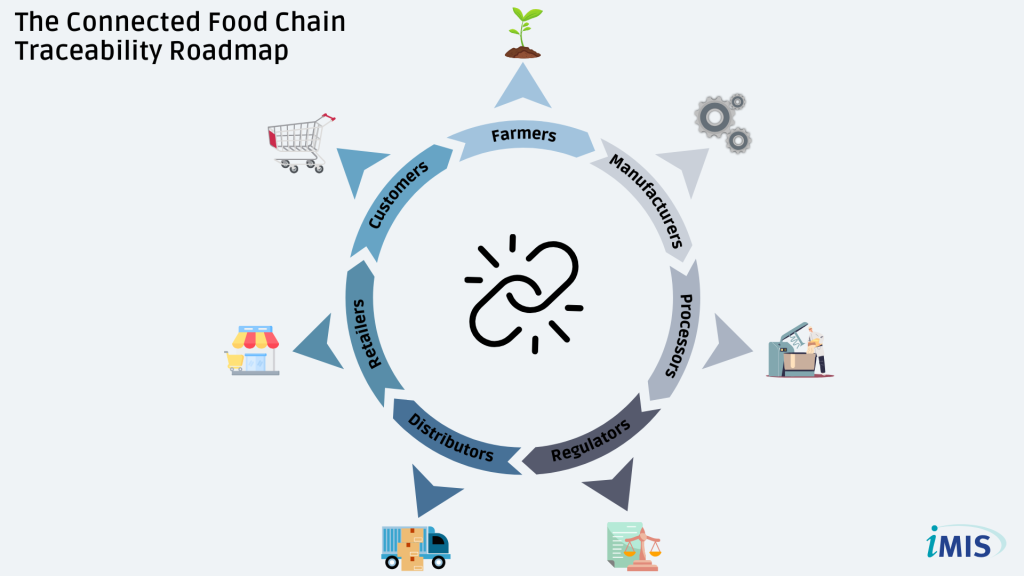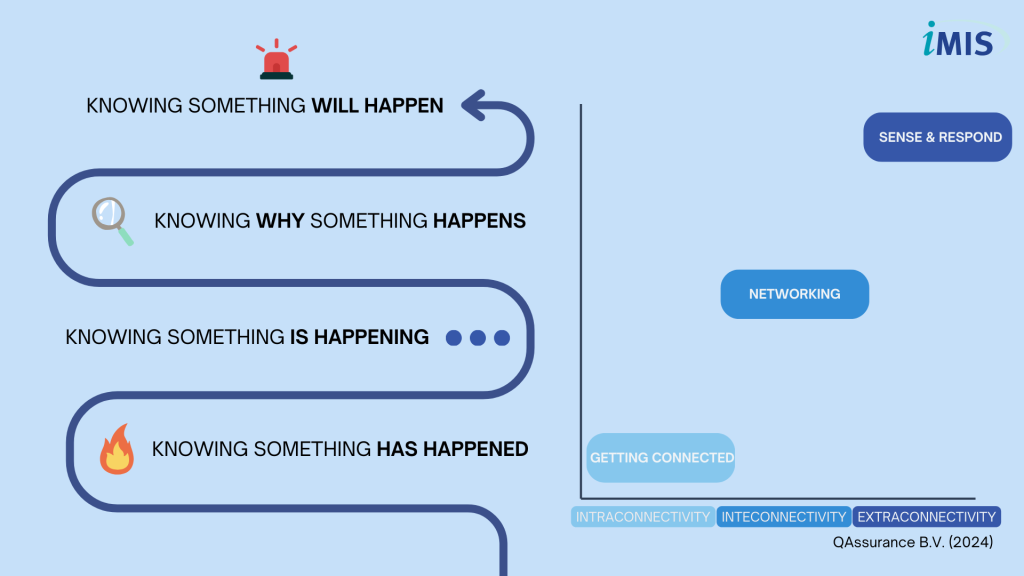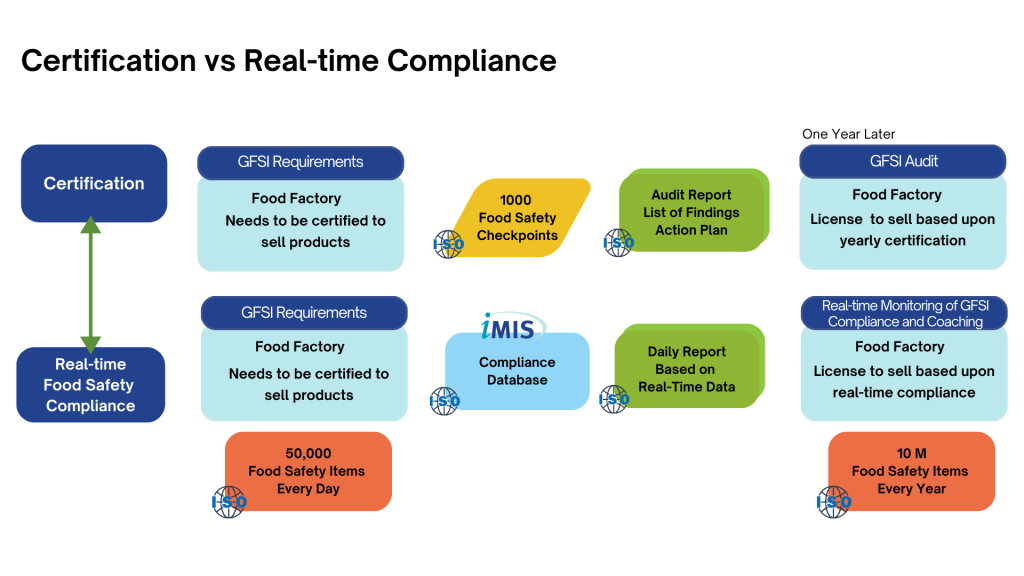Introduction
The food industry is abuzz with the potential of supplier portals, and centralized platforms designed to streamline information and enhance transparency across the supply chain. These portals offer a promising avenue for improved collaboration and data management, but their true power lies in their ability to evolve and adapt to the ever-changing needs of the food industry.
This article explores the exciting future of supplier portals and their role in building a truly connected food system. We’ll delve into the importance of real-time data, decentralized systems, and the integration of robust Quality Management Systems (QMS) to unlock the full potential of these platforms and create a more transparent, sustainable, and resilient food chain.
Journey from Farm to Fork
In today’s world, where consumers demand ethical and sustainable food, transparency in the food chain is paramount. This means openly sharing information about all aspects of production, from farm to fork, empowering everyone to make informed choices.
Achieving true transparency requires a multi-faceted approach, including clear communication, robust traceability systems, and collaboration with suppliers. Traceability, the foundation of transparency, relies on the active participation of all actors in the food chain (Fig. 1).

The Importance of Suppliers for Transparency in the Food Chain
Suppliers play a particularly crucial role in this system, contributing vital data and insights at every stage. By actively engaging suppliers in traceability initiatives, companies can establish a strong foundation for true connectivity and achieve comprehensive product transparency.
-> The EU Deforestation Regulation (EUDR) highlights the critical importance of traceability and supplier control. This law requires companies to prove their products are deforestation-free, emphasizing the need to trace origins and verify sustainable sourcing.
The Learning Food Organization: A Framework for Growth
The excitement surrounding supplier portals reflects a growing demand for transparency in the food industry. However, true transparency requires more than just technology; it demands a fundamental shift towards openness, collaboration, and real-time data sharing across the entire system.
To build a truly transparent and connected food chain, organizations must embrace the principles of a “learning organization.” This is crucial because it fosters a culture of continuous improvement, adaptability, and knowledge sharing—essential qualities for navigating the complexities of the modern food industry. A key characteristic of such an organization is its progression through different stages of connectivity (Fig. 1).
This collaborative approach, combined with the right technology, can unlock the true potential of transparency and create a more sustainable and trustworthy food system.

-> By understanding the stages of connectivity, we can see why simply adopting a supplier portal without first establishing a strong foundation of intraconnectivity can lead to issues.
Supplier Portals: Bridging the Connectivity Gap
To achieve true transparency and traceability, companies must prioritize strong partnerships with their suppliers, built on trust, shared responsibility, and a commitment to continuous improvement.
Supplier portals offer a valuable platform for collaboration and information sharing, but their effectiveness hinges on accurate and up-to-date data. Companies should therefore focus on establishing robust internal traceability systems before fully integrating supplier portals into their operations. This ensures that the data flowing through these portals is reliable and contributes to a truly transparent and connected food chain.
The Problem of Static Data
A key challenge for supplier portals lies in their reliance on static data and infrequent updates. This can create a disconnect between the information in the portal and the dynamic reality of the food supply chain.
To truly harness the power of these platforms, companies must prioritize the establishment of robust internal information flow and knowledge management systems. This ensures that data shared within the portal is accurate and reflects the ever-changing nature of the food industry, ultimately contributing to a more connected and transparent food system.
The Consequences of Outdated Information in the Food Chain
Presenting outdated information as the “truth” can have serious consequences:
- Eroding consumer trust
- Hampering risk management
- Creating inefficiencies
Missing Out on Real-Time Data
While supplier portals offer a valuable platform for connecting with suppliers, their true potential is unlocked when integrated into a comprehensive and interconnected system driven by real-time data. The real opportunity lies in harnessing dynamic, up-to-the-minute information to drive informed decisions and ensure transparency across the entire food chain.
Quality Management Systems (QMS) play a crucial role in this evolution. By enabling companies to manage compliance, recipes, and specifications in real time, QMS systems ensure that the data flowing through supplier portals and other channels is accurate, reliable, and reflects the dynamic nature of the food industry.
Recognizing this, many supplier portal providers are enhancing their platforms with features like recipe management and ingredient tracking. However, for these enhancements to be truly effective, food companies themselves need to adopt a holistic approach to data management. This means building a strong foundation of internal and external connectivity, ensuring that information flows seamlessly within the organization and with external partners.
The Need for Dynamic, Real-Time Data
To truly achieve connectivity in the food industry, supplier portals should evolve beyond static data repositories. They need to embrace dynamic, real-time data that reflects the ever-changing nature of the supply chain. This requires:
- Frequent updates: Suppliers need to be able to update their information easily and frequently, ensuring that the data in the portal is always current.
- Integration with other systems: Supplier portals should integrate with other systems, such as quality management systems and traceability platforms, to provide a holistic view of the supply chain.
- Real-time monitoring and alerts: Companies need to be able to monitor their supply chains in real time and receive alerts about any changes or potential issues.
Empowering Real-Time Compliance and Connectivity: iMIS Food
iMIS Food is a Quality Management System (QMS) solution that empowers food companies with real-time compliance, recipe, and specification management. Unlike traditional systems that rely on certifications, iMIS Food prioritizes ongoing verification using real-time data (Fig. 3). This ensures up-to-date information for informed decisions and a transparent food chain.
-> By 2025, iMIS Food will also offer a private supplier portal that integrates seamlessly into a company’s existing infrastructure.
This shift towards private supplier portals, embedded within a company’s network, allows for a more controlled and dynamic information exchange. By prioritizing real-time data management and intra- and interconnectivity, companies can build a more robust and responsive system, ensuring accurate information flow and enhancing traceability and transparency across the supply chain.

Sources
- Garvin, D. A. (1993). Building a learning organization. Harvard Business Review, 71(4), 78-91
- Mu, W., Kleter, G. A., Bouzembrak, Y., Dupouy, E., Frewer, L. J., Natour, F. N. R. A., & Marvin, H. J. P. (2024). Making f00d systems more resilient to f00d safety risks by including artificial intelligence, big data, and internet of things into f00d safety early warning and emerging risk identification tools.
https://research.wur.nl/en/publications/making-food-systems-more-resilient-to-food-safety-risks-by-includ - Senge, P. M. (1990). The Fifth Discipline: The Art & Practice of The Learning Organization
- Van Elst, C. (2022, April 11). Wat is het exact het doel van een HACCP-team? | februari 2024 Update. QAssurance | Partner in Food Safety | Real-Time Food Safety. https://www.qassurance.com/wat-is-het-doel-van-een-haccp-team/
Related articles to Beyond Supplier Portals: The Food Transparency Challenge and Real-Time QMS
Many customers and visitors to this page 'Beyond Supplier Portals: The Food Transparency Challenge and Real-Time QMS' also viewed the articles and manuals listed below:



